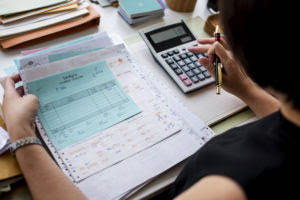
First, determine the annual depreciation expense using the straight line method. This is done by subtracting the salvage value from the purchase cost of the asset, then dividing it by the useful life of the asset. For instance, if a car costs $30,000 and is expected to last for five years, the DDB method would allow the company to claim a larger depreciation expense in the first couple of years. This not only provides a better match of expense to the car’s usage but also offers potential tax benefits by reducing taxable income more significantly in those initial years. The most basic type of depreciation is the straight line depreciation method. So, if an asset cost $1,000, you might write off $100 every year for 10 years.

Step 4: Apply the double declining depreciation rate
If the company was using the straight-line depreciation method, the annual depreciation recorded would remain fixed at $4 million each period. There are various alternative methods that can be used for calculating a company’s annual depreciation expense. The amount of final year depreciation will equal the difference between the book value of the laptop at the start of the accounting period ($218.75) and the asset’s salvage value ($200).
Declining Balance Method: What It Is and Depreciation Formula
HighRadius offers a cloud-based Record to Report Suite that helps accounting professionals streamline and automate the financial close process for businesses. We have helped accounting teams from around the globe with month-end closing, reconciliations, journal entry management, intercompany accounting, and financial reporting. Leveraging AI in accounting allows businesses to focus on strategic decision-making, reduce errors, double decline depreciation and enhance overall financial management. By integrating AI, companies can ensure precise and efficient handling of their asset depreciation, ultimately improving their financial operations. Multiply the straight line depreciation rate by 2 to get the double declining depreciation rate. In summary, the choice of depreciation method depends on the nature of the asset and the company’s accounting and financial objectives.
- If you have taken a loan to finance the asset’s purchase, you can quickly pay off a more significant chunk of that loan.
- For example, assume your business purchases a delivery vehicle for $25,000.
- The double-declining balance method multiplies twice the straight-line method percentage by the beginning book value each period.
- Under the straight-line method, the 10-year life means the asset’s annual depreciation will be 10% of the asset’s cost.
- This happens because of the matching principle from GAAP, which says expenses are recorded in the same accounting period as the revenue that is earned as a result of those expenses.
Outsourcing Xero Bookkeeping Service
This method is simpler and more conservative in its approach, as it does not account for the front-loaded wear and tear that some assets may experience. While it may not reflect an asset’s actual condition as precisely, it is widely used for its simplicity and consistency. When accountants use double declining appreciation, they track the accumulated depreciation—the total amount they’ve already appreciated—in their books, right beneath where the value of the asset is listed. If you’re calculating your own depreciation, you may want to do something similar, and include it as a note on your balance sheet.
- Then come back here—you’ll have the background knowledge you need to learn about double declining balance.
- The annual straight-line depreciation expense would be $2,000 ($15,000 minus $5,000 divided by five) if a company shells out $15,000 for a truck with a $5,000 salvage value and a useful life of five years.
- You calculate it based on the difference between your cost basis in the asset—purchase price plus extras like sales tax, shipping and handling charges, and installation costs—and its salvage value.
- When you’re a Pro, you’re able to pick up tax filing, consultation, and bookkeeping jobs on our platform while maintaining your flexibility.
- Accountingo.org aims to provide the best accounting and finance education for students, professionals, teachers, and business owners.
A Guide to Double Declining Balance Depreciation Method
After the final year of an asset’s life, no depreciation is charged even if the asset remains unsold unless the estimated useful life is revised. An exception to this rule is when an asset is disposed before its final year of its useful life, i.e. in one of its middle years. In that case, we will charge depreciation only for the time the asset was still in use (partial year). Like in the first year calculation, we will use a time factor for the number of months the asset was in use but multiply it by its carrying value at the start of the period instead of its cost. After the first year, we apply the depreciation rate to the carrying value (cost minus accumulated depreciation) of the asset at the start of the period.
When To Use Double Declining Balance Depreciation?
Hence, our calculation of the depreciation expense in Year 5 – the final year of our fixed asset’s useful life – differs from the prior periods. FitBuilders estimates that the residual or salvage value at the end of the fixed asset’s life is $1,250. Since we already have an ending book value, let’s squeeze in the 2026 depreciation expense by deducting $1,250 from $1,620. Double declining balance (DDB) depreciation is an accelerated depreciation method. DDB depreciates the asset value at twice the rate of straight line depreciation.

Straight Line Depreciation Rate Calculation

